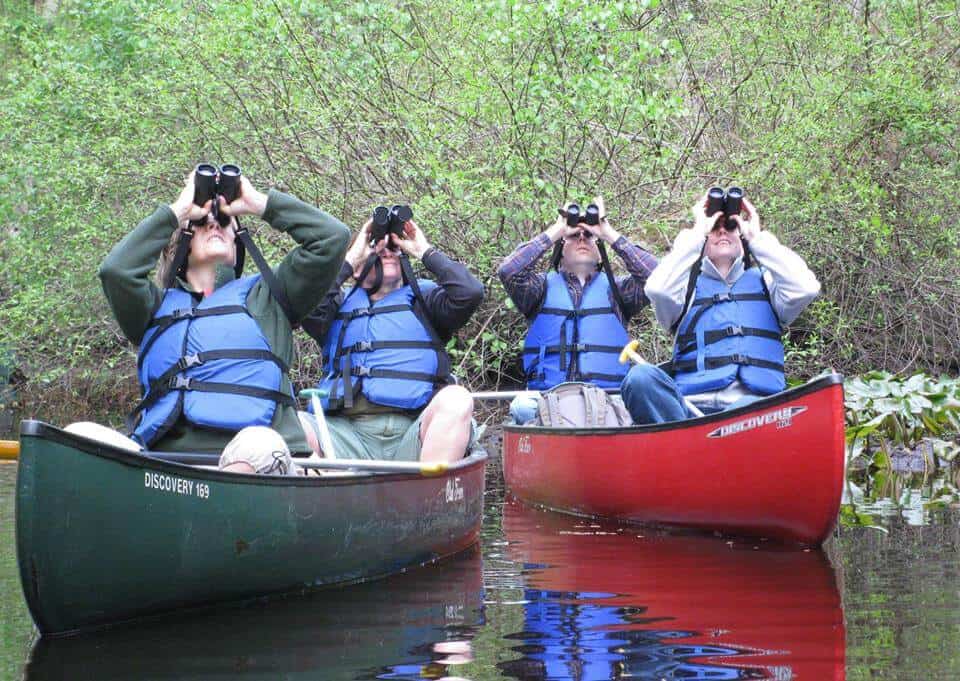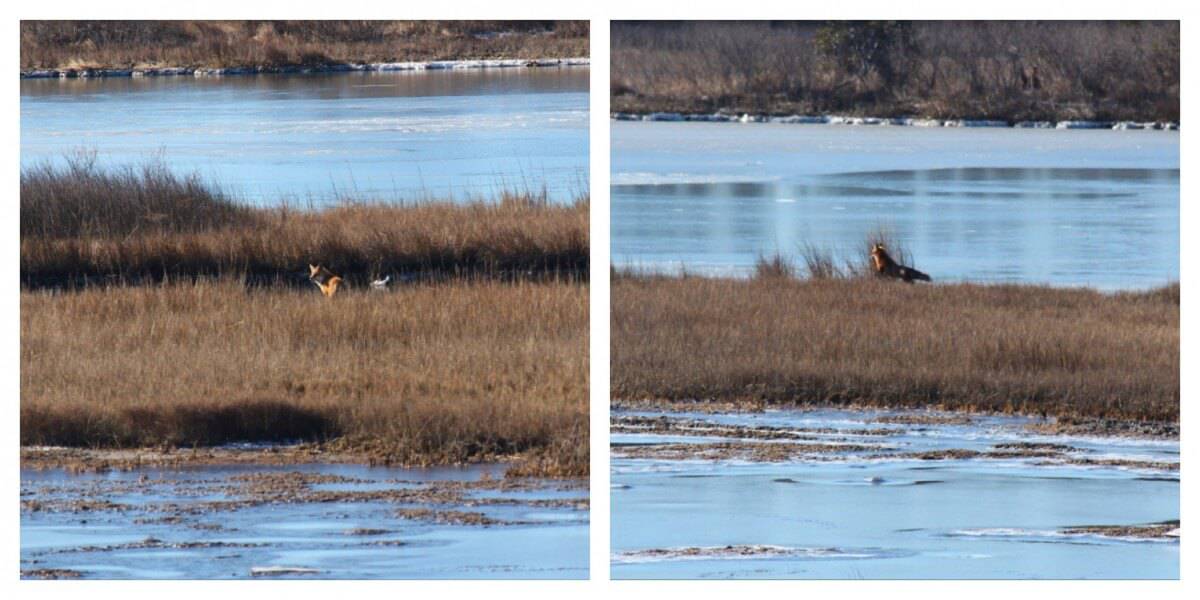For the fourth year, Delmarva goes to the birds
2019’s Winter Delmarva Birding Weekend will be held Jan. 25 – 27, signaling for local birders to dust off their binoculars and zoom lenses and prepare for a peaceful weekend watching for waterfowl, shorebirds, seals and more.
The fowl-centric weekend includes various field trips Friday through Saturday. Bundled-up birders drive, hike and boat to prime wildlife-watching locations on the Shore from the historic landings of Chincoteague Bay to Berlin Falls Park and Delaware’s Indian River Inlet.
While the winter birding expedition is only in its third year, the Spring Delmarva Birding Weekend will celebrate its 23rd anniversary this April. The downside of the winter weekend being, of course, the brisk weather. However, Delmarva Birding Weekend organizer and guide Jim Rapp says that to him, and other bird watchers along the coast, it’s well worth bearing the cold to see the winter wildlife.
“The animals that show up, the birds, even the seals, are really brilliant,” Rapp said. “You’ll see year-round species and migrants, and those will be gone by April.”

According to Delmarva Birding’s website, 108 species were tallied during their Winter Birding Weekend last year, including the Snowy Owl, the Great Cormorant, the Purple Sandpiper, the Snow Bunting, the Common Merganser, the Red-necked Grebe, and 27 species of waterfowl.
Because there’s such a wide range of land and sea-based habitats on the Shore, Delmarva is a paramount region for spotting birds and other wildlife in any season (there’s also a spring Birding Weekend, in addition to a number of events hosted by Delmarva Birding throughout the year). When asked what makes Delmarva the perfect location for birding and nature expeditions, Rapp said, “First of all the wildlife, second, the people.”
“We are really fortunate to have amazing habitats like the Chesapeake Bay, the Delaware Bay, the Coastal Bays, all the water as well as some of the greatest parks and wildlife refuges,” he said. “And we’re on an awesome resort. You can travel, get a hotel, go to a fantastic brewery. Wildlife and amenities, we’re fortunate enough to have both.”
Tourism as it relates to bird-watching brings money into the local economy, which goes back into promoting and supporting bird and habitat conservation. Tourists flock (get it?) to Delmarva year-round to view and photograph birds on their own, but the field trips and boat trips planned by Delmarva Birding turn the solitary pastime into a community-involved group effort.
Those who wish to partake in this weekend’s field trips should register online. We’ll be hoping you get a weekend of beautiful weather and that all the birds and wildlife come out to enjoy it!
Birding tips
For winter, from Delmarva Birding:
- Wear appropriate clothing and shoes for January weather near the ocean!
“There’s no such thing as bad weather, only bad clothes,” Rapp said. “Don’t hesitate to pack on some extra layers.”
- Carry sunscreen, sunglasses and/or a hat to protect yourself from the sun. You can still get sunburn in the winter.
- Bring rain gear as all events are rain or shine.
- Try to arrive a little before the scheduled trip departs.
- Boat trips usually fill earlier than other trips; please make your reservations early.
- Most trips are not appropriate for young children. Please use your discretion when registering.
- Be courteous to your fellow birders. Speak quietly and turn off cell phones during trips.
- Vegetarians & guests with seafood allergies must make their restrictions known for trips that include lunch.
- There are no restroom facilities on most trips.
For general bird watching:
- Be prepared with multiple layers of clothing, and anything else that’ll be necessary for the environment and the weather (a hat, sunscreen, bug spray, etc.). Bring along a bag to stash extra layers if it gets warmer.
- Two staples of a bird watcher’s wardrobe should be sturdy boots and an insulated coat that can stand up to wind, rain and snow.
- Bring a notebook to mark what species you see, or even create a log based on the species, the habitat and the season.
- Watch birds from your own backyard by putting up a bird feeder or two. These are especially great for birds in the winter, when bad weather can make food harder to find.
For photographing birds:
- Birds are small and fast, so photographing them can be difficult. However, it’s a lot easier if you have a DSLR camera with a high shutter speed, the ability to auto-focus and a zoom lens.
- Shoot at a high shutter speed, around 1/800 and above.
- Get as many shots as you can. The more, the merrier.
- Have patience! That’s the number one rule of bird watching in general, isn’t it?
- Photography Life has an article with lots of great resources and tips for photographing birds, for the novice to the professional photographer.
Our “birding” adventure
My fiancé and I headed to Assateague one morning in the hopes that we might be able to spot a few cool birds and snap a few pictures to share. We were a little overly optimistic, especially considering we were not even out of bed by sunrise and missed the prime early-morning hours for bird watching. Also, our cameras are better geared toward photographing big, slow ponies rather than tiny, quick-moving birds.
So, on that note, here are some ponies and foxes with a lone bird thrown in the mix! May anyone looking to photograph birds this weekend have better luck (and expertise) than we did, but remember, horse pictures are always okay, too. In fact, on Assateague, they’re practically required. Photos by me and William Strang-Moya.






Thinking about going out this weekend? Here are some species you might find on your expedition.
This article was originally published on 1/24/18 and was updated for the 2019 season.

